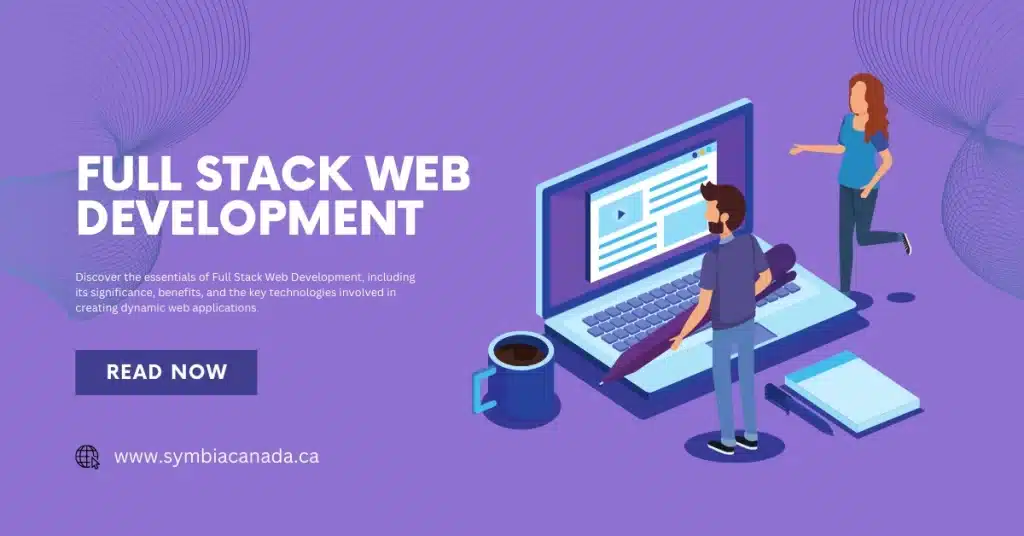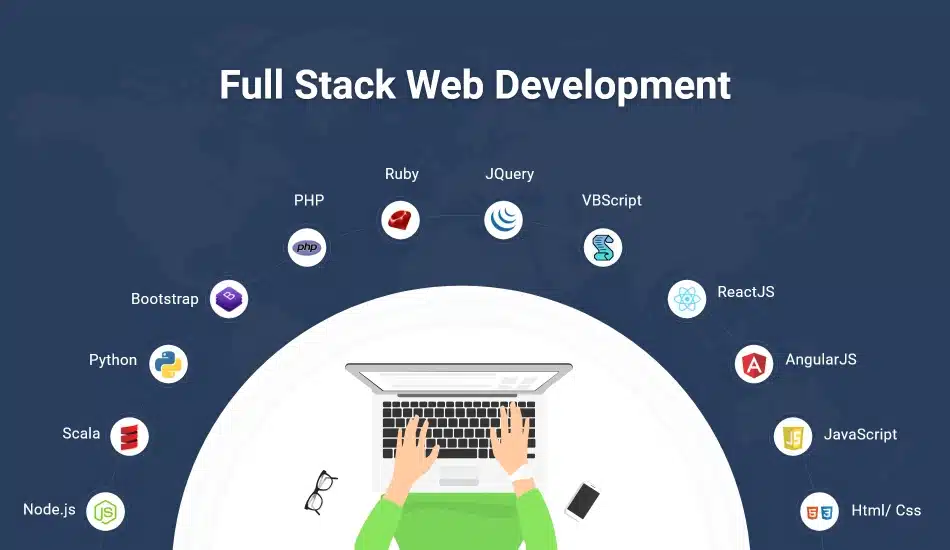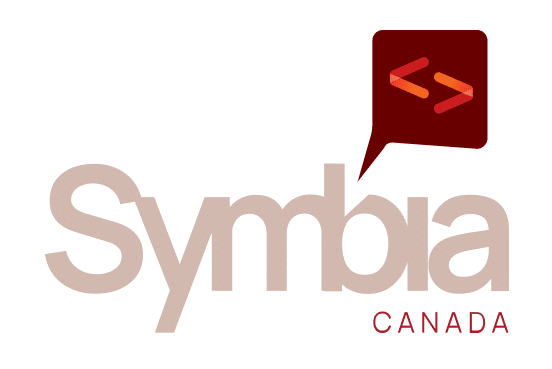
In the ever-evolving world of technology, Full Stack Web Development has emerged as one of the most sought-after skills. As businesses transition to the digital landscape, the demand for professionals who can handle both front-end and back-end development is skyrocketing. But what exactly does Full Stack Web Development entail? Why is it important, and what benefits does it offer? This blog delves into all these aspects, providing you with a comprehensive understanding of Full Stack Web Development.
What is Full Stack Web Development?
Full Stack Web Development refers to the practice of working on both the front-end and back-end aspects of a web application. A Full Stack Developer is proficient in handling all layers of the web development process, from the user interface to the server, database, and everything in between. To break it down:
Front-End Development
This involves everything that users interact with directly on a website. Front-end developers use languages like HTML, CSS, and JavaScript to create visually appealing and user-friendly interfaces. Frameworks and libraries such as React, Angular, and Vue.js further enhance the functionality and aesthetics of web pages.
Back-End Development
The back-end is the server side of a web application. It’s where the core logic, database interactions, authentication, and server configuration happen. Back-end developers work with languages and frameworks like Node.js, Django, Ruby on Rails, PHP, and databases like MySQL, MongoDB, and PostgreSQL.
Full Stack Development
A Full Stack Developer is well-versed in both front-end and back-end development, enabling them to build a complete web application from start to finish. They understand how different layers of a web application interact and can optimize the entire system for better performance and scalability.
The Importance of Full Stack Web Development

In today’s fast-paced digital world, the ability to manage and execute both front-end and back-end development processes is invaluable. Here are some reasons why Full Stack Web Development is so important:
Versatility
Full Stack Developers can work on both client-side and server-side, which makes them extremely versatile. They can handle a wide range of tasks and are often seen as a one-person army capable of developing a fully functional web application.
Cost-Efficiency
Hiring a Full Stack Developer can be more cost-effective for startups and small businesses. Instead of hiring multiple specialists for different aspects of development, a Full Stack Developer can manage the entire project, reducing the overall cost.
Faster Development Process
With a single developer handling both front-end and back-end tasks, the development process becomes more streamlined. There’s no need for constant back-and-forth communication between different teams, which speeds up the project timeline.
Comprehensive Problem Solving
Full Stack Developers have a holistic understanding of the web development process. This allows them to foresee potential issues and implement solutions that are efficient and effective. Their ability to troubleshoot problems at any layer of the application is a significant asset.
Better Project Management
Full Stack Developers can oversee the entire development process, ensuring that all components are seamlessly integrated. This holistic view enhances project management and ensures a cohesive end product.
A Comprehensive Roadmap to Master MERN Stack Development
Benefits of Full Stack Web Development

Choosing Full Stack Web Development comes with a plethora of benefits. Here are some of the key advantages:
End-to-End Responsibility
Full Stack Developers take full responsibility for the project, from inception to completion. This end-to-end involvement ensures a consistent and coherent development process.
Enhanced Skill Set
Working on both front-end and back-end development requires a diverse set of skills. Full Stack Developers are continuously learning and updating their knowledge, which makes them highly adaptable to new technologies and methodologies.
High Demand and Better Pay
Due to their versatility and comprehensive skill set, Full Stack Developers are in high demand across various industries. This demand translates into better job opportunities and higher salaries.
Improved Collaboration
Full Stack Developers can effectively communicate and collaborate with both front-end and back-end teams. This ability to bridge the gap between different aspects of development fosters better teamwork and more successful project outcomes.
Greater Creative Control
Full Stack Developers have the creative freedom to implement their vision across the entire web application. This control over both the design and functionality allows for more innovative and cohesive products.
Key Technologies in Full Stack Web Development

To become a successful Full Stack Developer, one must be proficient in various technologies. Here’s a look at some of the essential tools and frameworks used in Full Stack Web Development:
Front-End Technologies
HTML/CSS: The building blocks of web development, used to structure and style web pages.
JavaScript: A versatile programming language for creating interactive and dynamic web applications.
React: A popular JavaScript library for building user interfaces.
Angular: A framework for developing single-page applications.
Vue.js: A progressive JavaScript framework for building user interfaces.
Back-End Technologies
Node.js: A JavaScript runtime built on Chrome’s V8 engine, used for building scalable network applications.
Django: A high-level Python web framework that encourages rapid development.
Ruby on Rails: A server-side web application framework written in Ruby.
PHP: A widely-used open-source scripting language suited for web development.
MySQL/PostgreSQL: Relational database management systems for storing and retrieving data.
MongoDB: A NoSQL database known for its scalability and flexibility.
DevOps and Tools
Git: A version control system for tracking changes in source code during software development.
Docker: A platform for developing, shipping, and running applications in containers.
Kubernetes: An open-source system for automating deployment, scaling, and management of containerized applications.
How to Get Started with Full Stack Web Development?

Embarking on a journey to become a Full Stack Developer can be daunting, but with the right approach, it’s entirely achievable. Here are some steps to get you started:
Learn the Basics
Begin with the fundamentals of web development. Learn HTML, CSS, and JavaScript, and understand how they work together to create web pages.
Pick a Front-End Framework
Choose a front-end framework or library like React, Angular, or Vue.js, and become proficient in it. These tools will help you build complex user interfaces more efficiently.
Master Back-End Development
Learn a back-end language and framework that suits your interest, such as Node.js, Django, or Ruby on Rails. Understand how to create server-side logic and interact with databases.
Familiarize Yourself with Databases
Gain knowledge of both relational (SQL) and non-relational (NoSQL) databases. Learn how to design, query, and manage databases effectively.
Explore DevOps Tools
Familiarize yourself with version control systems like Git, and explore containerization tools like Docker. Understanding these tools will streamline your development process and enhance collaboration.
Build Projects
Apply your knowledge by working on real-world projects. Building complete web applications will help you gain practical experience and improve your problem-solving skills.
Stay Updated
The tech industry is constantly evolving. Keep learning and stay updated with the latest trends, tools, and best practices in Full Stack Web Development.
Conclusion
Full Stack Web Development is a dynamic and rewarding field that offers numerous opportunities for growth and innovation. By mastering both front-end and back-end technologies, Full Stack Developers can create comprehensive and scalable web applications. The versatility, cost-efficiency, and faster development process associated with Full Stack Development make it an invaluable skill in today’s digital age. Whether you’re a budding developer or an experienced professional looking to expand your skill set, Full Stack Web Development offers a path to a fulfilling and prosperous career.
